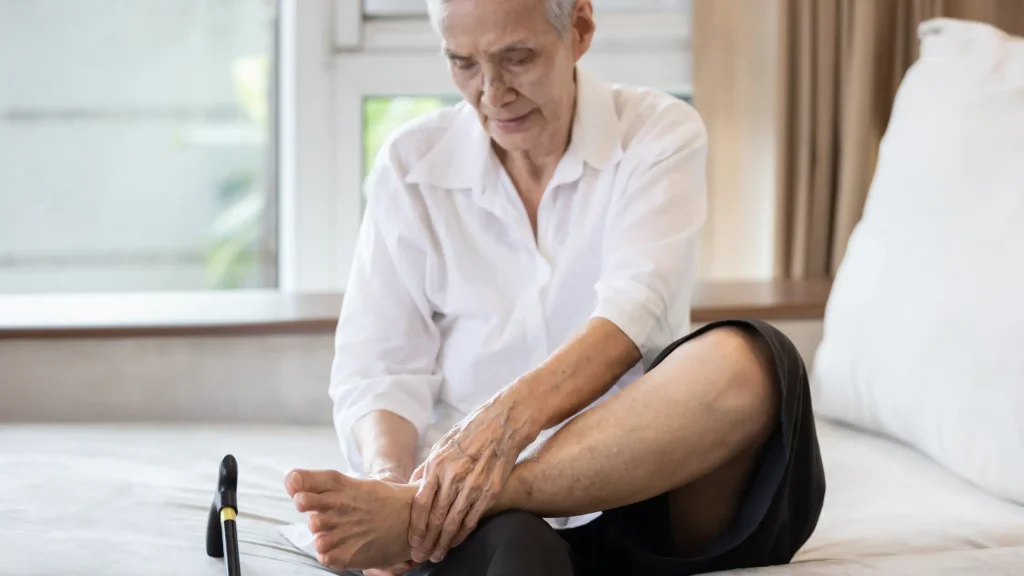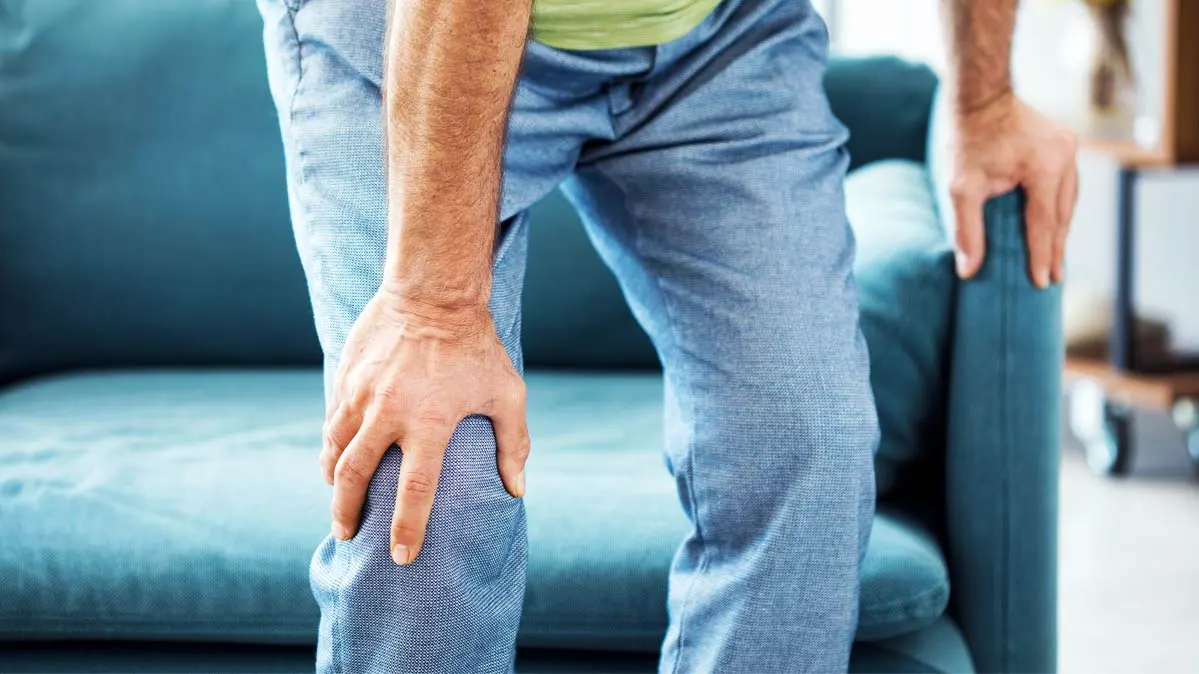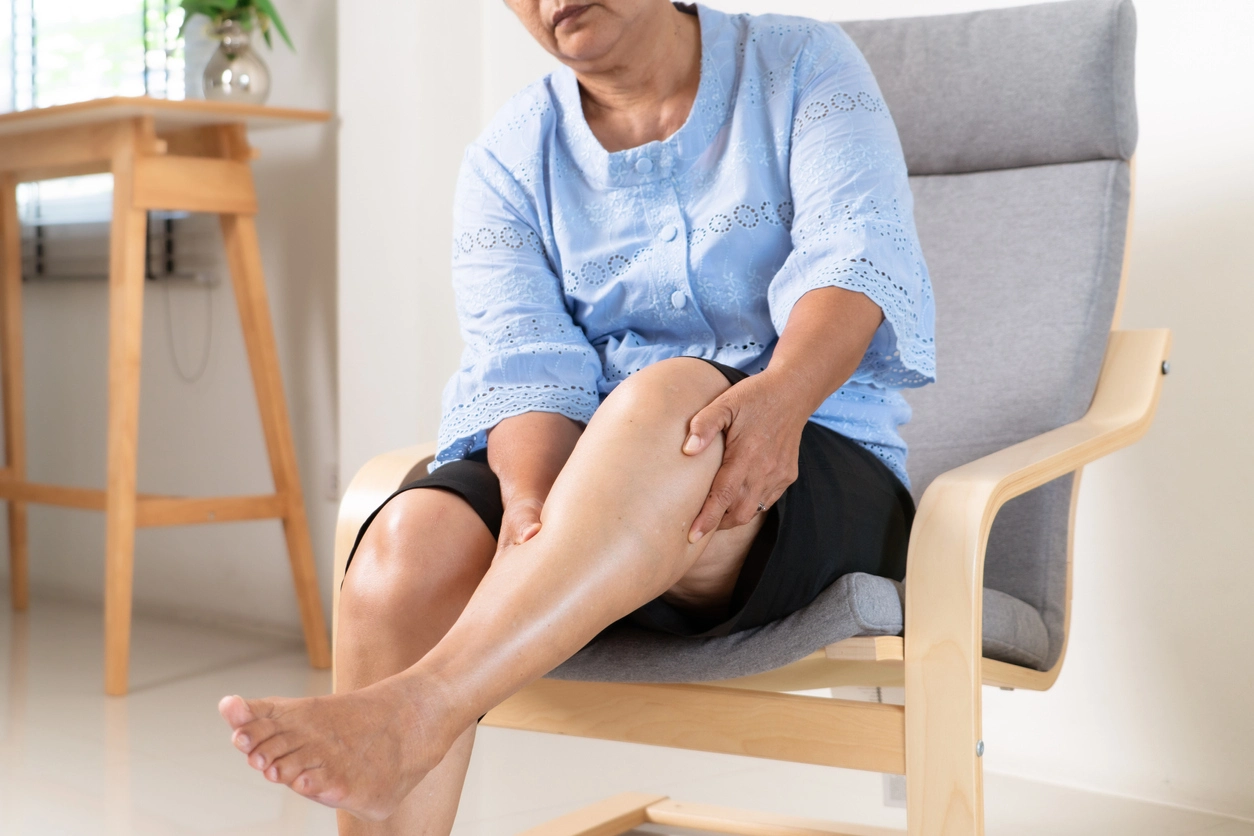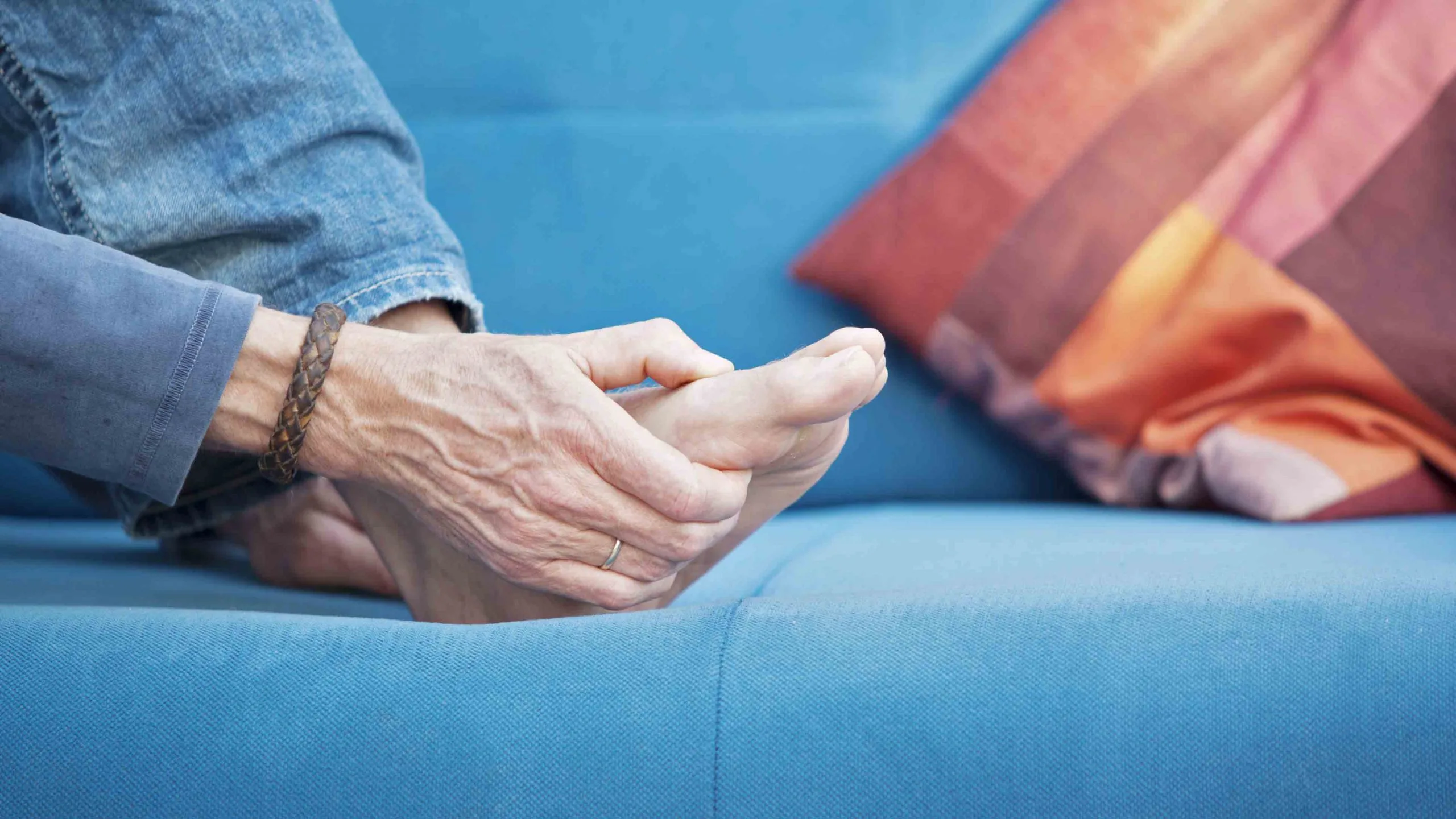
Common Causes of Foot Pain in the Elderly
The causes of foot pain in the elderly should be sought among common foot diseases. Pain in the foot area disrupts the elderly’s daily activities, as well as getting up from a chair or climbing stairs. Some elderly people suffer from imbalance due to foot pain. Elderly people who suffer from pain in the affected parts of the legs are often sedentary and as a result will gain weight. Elderly people who lose their ability to walk suffer from heart complications. Due to the importance of this issue, we will examine this issue in this article from the humanhealthmag.
So, foot problems in older adults disrupt the daily activities of the elderly and cause heart disease, inactivity, and overweight in them. But what causes painful feet in old age?
13 Causes of Foot Pain in the Elderly
Elderly people experience some changes in their feet because they have been standing on their feet for many years. Most of the natural padding under the heel and toes is lost. The arch of the foot becomes flatter and less flexible, the ankle and foot joints become drier, and the entire top of the foot becomes wider and longer. Due to these changes, they may experience foot pain and other problems even if they have never had any problems with their feet before.
Some elderly people with a history of underlying diseases are at greater risk of developing foot problems. Diabetes can cause reduced blood circulation and nerve damage in the foot. Common seniors foot problems causes are as follows:
- Bone spur on the side of the foot
A bone spur on the side of the foot is sometimes a hereditary feature, but it may also be caused by years of friction from inappropriate insoles. Flat feet, gout and arthritis also increase your chances of developing this foot protrusion.
- Corns and calluses
Corns are caused by friction from unsuitable shoes or socks, or by rubbing the toes against each other. A callus is similar to a corn, but it forms on the ball or heel of your foot.
- Hammer toe
Hammer toe is caused by abnormal pressure in the muscles and tendons around the foot joints, which causes the toe to bend and twist. Eventually, the joint stiffens.
- Foot nail problems
Ingrown toenails (usually on the big toe) are caused by hereditary abnormalities, improper nail trimming, toe injuries, infection, or friction from inappropriate shoes. Abnormally thick, cracked, and yellowed nails may be due to fungal infections, friction from shoes, injuries, or diseases such as diabetes or psoriasis.

- Diabetic foot problems
Diabetic foot problems are one of the common causes of foot pain in the elderly. In this common foot problems in aging feet, you may experience decreased sensation in your feet due to diabetes, which makes it difficult for you to notice injury. Also, if you have diabetes, blood flow in your feet is impaired, so fighting infection can be more difficult.
- Arthritis foot problems
Arthritis, gout and rheumatoid arthritis are problems that can cause severe foot pain.
- Heel pain
Conditions such as flat feet may be caused by poor foot force, including excessive flatness or excessive arch of the foot. In any case, the fascia (the ligament that runs along the sole of the foot) may become irritated and painful. Painful heel spurs are the growth of small bones that occur when the passing ligament along the heel of the foot is repeatedly pulled on the heel bone.
- Arch problems
Flat feet and its opposite, excessive arch (claw foot or hollow foot) are caused by an Achilles tendon (the vertical tendon behind the ankle) that is either too tight or too loose. These conditions are usually inherited, but flat feet can also develop after years of wearing high heels. In this case, the condition is known as posterior tibial tendon dysfunction. Flat feet are also associated with obesity, diabetes, rheumatoid arthritis, or the use of steroids.
- Tarsal Tunnel Syndrome
In this common causes of foot pain in seniors, a nerve called the posterior tibial nerve may be trapped, causing irritation and painful symptoms.
- Achilles Tendinitis
If you are overweight, you may develop Achilles tendinitis due to years of extra pressure on the tendon. This condition is also related to a congenitally shortened Achilles tendon or wearing high heels. Sudden severe Achilles tendinitis or even a ruptured Achilles tendon may be a complication of some antibiotics such as levofloxacin or ciprofloxacin.
- Morton’s Neuroma
In this condition, thick tissue covers the nerves that reach the toes. This problem is usually caused by wearing shoes that are too tight, arthritis, injury or misshapen bones. The result is nerve compression.
- Fungal nail infection
Diseased nails may become discolored and turn yellowish-brown or dull. These nails are infected, have less thickness to the point where they may become layered and separate from other parts of the nail. Ingrown nails can also be a sign of nail disease and affect diabetics more than others. Dark, humid and warm environments can be environments for the growth of fungi.
Any fracture or injury to the nails may put you at risk for serious infections. There are antifungal drugs in any pharmacy, but the fact is that treating diseased nails is not an easy task and only a few drugs can save you from these fungi. Oral tablets are not prescribed for the treatment of nails, and if your nails have a fungal infection, you should wait for it to improve with topical treatment. Finally, if the nails do not improve with medication, the doctor will remove the infected tissue from the fingers.
- Blister
Blister is one of the common causes of foot pain in the elderly. When the shoes put more pressure on one point, it causes blisters. In order to observe foot hygiene and prevent blistering of the feet, it is better to wear shoes with socks, and if a blister forms, be careful not to pop it. This skin that covers your blister prevents infection of your feet, so do not tamper with it too much. For treatment, you can go to the pharmacy, buy an antibacterial cream and apply it to the blister according to the instructions. If your blister bursts, cover it with a soft bandage to prevent infection.

Causes of Foot Pain at Night in Elderly
Leg cramps at night and restless legs syndrome typically occur during sleep, and this is their only similarity. Other features of these two are different, and we will mention some of them below:
- Restless legs syndrome is more of a painful or creeping sensation in the legs.
- Restless legs syndrome does not cause pain or cramps, which we see in leg cramps.
Moving the leg helps to relieve restless legs syndrome, but this is not the case with leg cramps, and you should stretch your leg instead of moving it. When you experience restless legs syndrome, you get the feeling that you intend to move your legs, but what you experience in leg cramps is avoiding any movement.
8 Causes of Leg Pain in the Elderly
a) Muscle cramps
Muscle cramps are temporary and sudden contractions that can occur during sleep at night or in the middle of the day. This sudden and severe pain in the leg is also called a “Charlie horse”. When a muscle cramp begins, it can quickly worsen.
b) Shin splints
This pain is felt right in front of the leg. In this condition, the muscles and tissues that are located on the edge of the tibia or shin become swollen, and the person experiences pain while walking, running, or jumping.
c) Achilles tendinitis
One of the first warning signs of Achilles tendon inflammation is pain in the calf muscle, near the back of the heel. This very common injury causes the tendon to swell, stretch, and tear. Achilles tendinitis can be caused by excessive leg activity or climbing stairs. This injury may be long-term.

d) Sprain or bone fracture
In this injury, the ankle may be twisted or the ligament may be slightly stretched. It is recommended to use the RICE treatment method (Rest, Ice, Compression, and Elevation).
e) Blood clotting
When blood thickens and sticks together in the veins, it can turn into a clot. A clot that occurs in deep veins is called deep vein thrombosis. Most deep vein clots occur in the lower part of the leg. If a person has not been active for a long time, such as sitting for a long time on a plane or in a car, the chance of clotting is higher.
f) Varicose veins
Varicose veins can be seen as dilated and tortuous veins in dark blue or purple in the leg. These vessels, especially when standing, cause a lot of pain.
g) Peripheral artery disease of the lower extremities:
This condition can occur when the arteries of the leg are damaged or stiffened. When the arteries become narrow or blocked, enough blood does not reach the legs. This lack of sufficient blood to the muscles causes the person to feel tightness and pain while walking, climbing stairs, or doing other sports activities.
h) Nerves
It is possible that the root of the leg pain is from the nerves.
7 Causes of Sole of Foot Pain in the Elderly?
- Fasciitis
- Arthritis, gout and osteoarthritis
- Parkinson’s disease
- High blood pressure
- Obesity
- Osteoporosis
- Kidney disease, heart attack and hypothyroidism
Aging without foot pain
- Performing some exercises in the toe area can help prevent the cause of foot pain in the elderly.
- Performing stretching movements and choosing good shoes can also prevent these pains.
- Elderly shoes should be light and have a wide heel with a maximum height of two centimeters.
- It should also be without laces so that the elderly person can easily put it on.
- Likewise, it should have enough space in the front of the foot so that it does not cause the toes to be compressed together.

Home Remedies for Foot Pain in the Elderly
Mild foot discomfort often improves with rest, light exercisen, massage for seniors, and stretching, and home remedies. Some treatment strategies for the cause of leg pain in the elderly include the following:
- Performing light elderly foot exercises are suitable for relieving hip and leg pain.
- Using a hot water bag is effective for mild leg pain or muscle cramps in the legs.
- Consuming carrot juice is very useful for treating leg pain caused by diabetes.
- Using basil oil is one of the ways to treat leg pain in the elderly.
- Using a mixture of henna with water and soap can be effective.
- Walnut kernels with black cumin from Kerman and some honey can help treat and relieve pain.
- Using an infusion of thyme is another traditional medicine approach to treating leg pain in the elderly.
Concluding Remarks
In this article from the humanhealthmag, we talked about causes of foot pain in the elderly. One of the common diseases in old age is foot pain, which makes it difficult for them to do daily activities and go up and down stairs. Some elderly people become unbalanced due to foot pain. Others become overweight and develop heart complications due to inactivity.
Elderly people with a history of underlying diseases are at greater risk of developing foot problems. However, foot problems are less common in people who are fit and keep their muscles in good condition. Finally, you can overcome this pain by using home remedies for foot pain in the elderly.

Frequently Asked Questions
What Are the Common Causes of Foot Pain in the Elderly?
Foot pain in the elderly is often caused by a combination of factors, including aging-related changes in foot structure, such as loss of cushioning, flat arches, and joint stiffness. Additionally, wearing ill-fitting shoes can exacerbate these issues. Common conditions like arthritis, neuropathy, diabetes, and poor circulation also contribute significantly to foot pain in older adults, leading to discomfort and mobility challenges.
How Does Aging Affect Foot Health?
As people age, their feet undergo various changes that can lead to pain and discomfort. This includes a decrease in fatty tissue padding, reduced flexibility of ligaments and tendons, and changes in bone density. Additionally, the production of collagen slows down, resulting in less resilient tissues. These factors can lead to conditions such as plantar fasciitis, arthritis, and bunions, which are prevalent among older adults.
Can Improper Footwear Lead to Foot Pain in Seniors?
Yes, wearing improper footwear is a significant contributor to foot pain among seniors. Shoes that are too tight, narrow, or have high heels can cause discomfort and exacerbate existing foot problems. Ill-fitting shoes can lead to conditions like bunions and hammertoe, making it crucial for older adults to choose supportive and appropriately sized footwear to maintain foot health.
What Role Do Chronic Conditions Play in Foot Pain?
Chronic conditions such as diabetes and arthritis play a substantial role in foot pain among the elderly. Diabetes can lead to neuropathy, resulting in reduced sensation and increased risk of injuries that may go unnoticed. Arthritis causes inflammation and stiffness in the joints of the feet, contributing to chronic pain and mobility issues.
How Can Seniors Manage Foot Pain Effectively?
Seniors can manage foot pain through several strategies, including wearing properly fitted shoes that provide adequate support and cushioning. Regular foot care practices such as keeping feet clean and moisturized, performing gentle stretching exercises, and consulting with a podiatrist for personalized treatment plans can also help alleviate discomfort.
Are There Specific Exercises that Can Help with Foot Pain?
Yes, specific exercises can help strengthen the muscles in the feet and improve flexibility. Simple stretches for the toes and arches, along with balance exercises like toe raises or heel-to-toe walking, can enhance mobility and reduce pain. A podiatrist or physical therapist can recommend tailored exercises based on individual needs.
When Should Seniors Seek Professional Help for Foot Pain?
Seniors should seek professional help for foot pain if they experience persistent discomfort that interferes with daily activities or if they notice any unusual changes in their feet such as swelling, redness, or sores that do not heal. A podiatrist can provide a thorough evaluation and recommend appropriate treatments or interventions to address underlying issues
